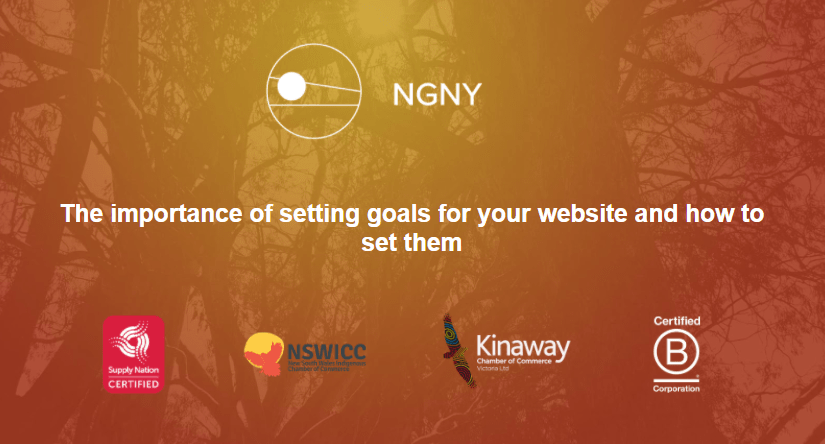
Perhaps you might think that website planning does not include setting your goals but apparently this is one of the most important. Building and maintaining a website without clear cut goals may get you in trouble in the long run. It’s easy to get into the habit of just “maintaining” your site. Without specific goals, it’s very difficult to know how any of that translates into success. Website goals are material in helping owners to strategically design and improve their websites based on informed data. It is not enough to publish regular content and manage your engagement, it matters when you have a clear direction as to what you want to achieve for your website. This is where goal setting comes in.
Artists tune their instruments before the start of their concerts. This goes to show that preparation is key to be able to give a quality performance. In the same way, website owners should also be intentional about goal setting in building and designing their website, not just growing profits. Some important considerations include the type of content to develop and work on, organizational structure, visitor interaction and the measurable benefits of having your website.
How do you start your goal setting process for your website? It is imperative for you to come to terms with your website’s purpose, or your WHY. From here, you can start to devise attainable goals rooted from your puporse. It also matters to have a primary website goal and come up with at least two sub-goals. The keywords here are breakdown of goals into specific details as it will help you map out the next steps towards achieving them. Here are some of the goal setting tips which can help you get started. The tips are divided into two with discussions under each main tip.
- Define your business goals and translate them into clear website goals.
Don’t get me wrong, both business goals and website goals should complement each other. The former refers to the entirety, like the end goal while website goals are the means of achieving those business goals. Website goals tend to be more specific and they can be more actionable, thus it is imperative to be intentional in making your website goals. It’s important to figure out how your organizational goals can translate into website goals. The following are some examples as to how a business goal and a website goal should complement each other.
- Increasing leads. This is an example of a business goal. To transform it into a website goal, we can further break this down into increasing website traffic, customer engagement and email captures.
- Sell products and services. Website goals to achieve this business goal include increased site wide conversions, decreased bounce rates, decreased abandoned cart rates, and increased size of orders.
- Retain old clients and make new clients. Increased blog engagement, returning visitors and wider scope of your website content are some manifestations of this business goal. Further, you might seriously consider expanding your website to include digital marketing, social media to broaden your reach.
- Monitoring Using Analytics
Statistics will tell you that the website goals you’ve set are realistic enough to be met. Monitoring system in your website must be in place otherwise it’s like an aimless walk, without a specific direction. Assuming you subscribed to aligning your business goals to your website goals, how will you know that you’ve succeeded and your efforts were realized? That’s why monitoring is also indispensable in goal setting. This makes sure that checks and balances are done properly in terms of measuring the input and output for website success. Google Analytics is a helpful tool in setting up your goals and Key Performance Indicators (KPIs) to conduct monthly performance meetings for your site. You can review your statistics and from there you can summarize your findings to better align your action plan to achieve your goals and scrap those items that do not work for you. Goals and KPI’s are native within Google Analytics and easy to keep up with on a regular basis. However, some objectives like form submissions or email signups require you to set up a “Goal” to track.
So, assuming you have a Google Analytics account with your website property set up, here is a short step-by-step guide to setting up goals:
- First, go to your Admin settings in Google Analytics, and then navigate to “Goals” under the “All Website Data” category and click on it.
- Here, you’ll see all the goals that you’ve created so far, along with the option to create a new goal. Click on the “New Goal” tab.
- You may select a template for your goals or a custom one.
- Now, you’ll be redirected to the goal description section. Enter in your goal name and choose the type of goal you want to make. An example of a type of goal is a destination goal used to track conversions.
- Next, you’ll choose a goal destination. If you choose duration, pages viewed, or event, this will all look a little different but work the same way. Enter the URL or set the criteria for what you want to track.
- When you reach this part, you’ll see the option Verify This Goal which gives you a temporary data on how the goal had converted based on the data from the previous week.
- You are now ready to save your goal.
Accomplishing your goals should mean translated success to both your business and your website.




